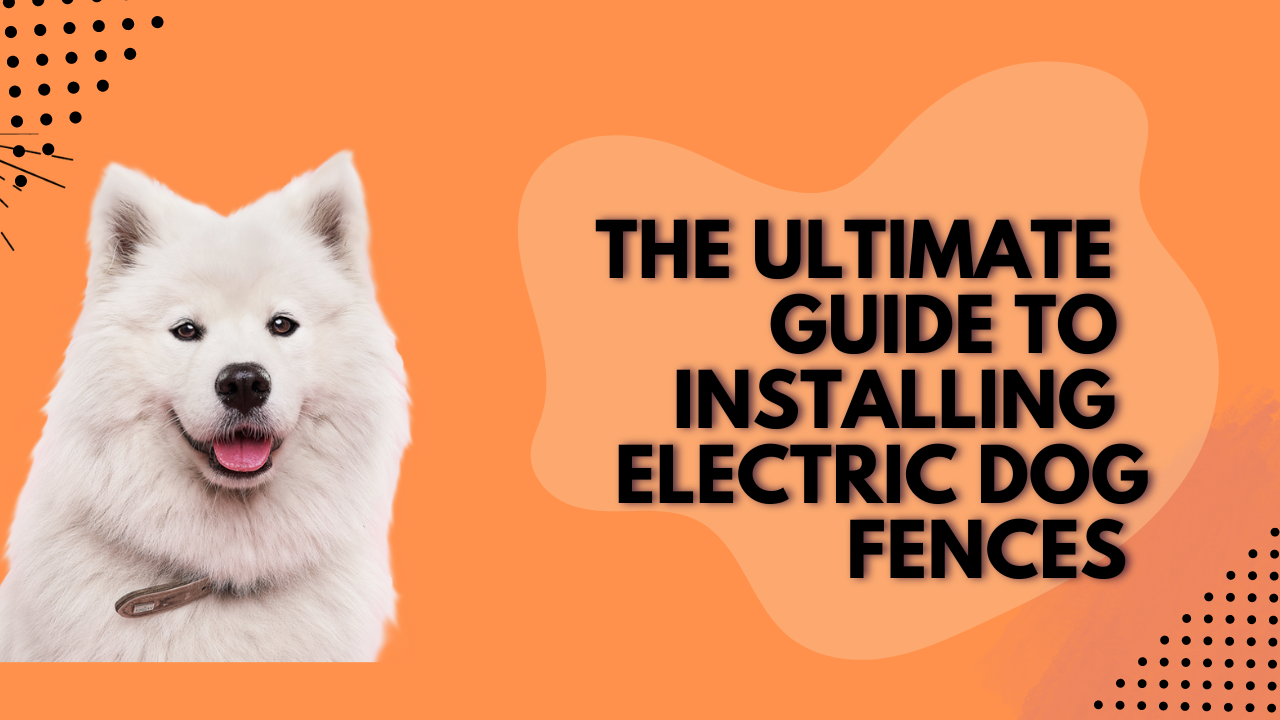
The Ultimate Guide to Installing Electric Dog Fences : Wireless, In-Ground, GPS, and Indoor Options.
Installing an electric dog fence is a great way to keep your furry friend safe while giving them the freedom to roam.
Whether you’re setting up a wireless system or a traditional buried wire,
this step-by-step guide will walk you through the process.
We’ll also cover various types of electric dog fences, including indoor options, GPS systems, and temporary solutions for travel.
- Choosing the Right Electric Dog Fence
Before diving into installation, it’s crucial to choose the right type of fence for your needs. Here are some popular options:
- Wireless Dog Fence: Ideal for easy setup and minimal maintenance. Check out wireless dog fence reviews to find the best options.
In-Ground Electric Fence: Provides a more permanent solution with buried wires. Great for large yards.
- GPS Dog Fence: Offers advanced tracking and flexibility.
- Indoor Dog Fence: Perfect for apartments or indoor training.
- Gathering Your Materials
Depending on the type of fence you choose, you’ll need the following materials:
- Wireless System: Transmitter, receiver collar, flags.
- In-Ground System: Wire, transmitter, receiver collar, flags, shovel or trenching tool.
- GPS System: GPS collar, smartphone app or handheld device.
- Indoor System: Panels, connectors, transmitter, receiver collar.
- Planning Your Layout
Before installation, plan the layout of your electric dog fence. Here are some tips:
- Measure Your Yard: Determine the perimeter where you want the fence to go. This is crucial for both in-ground and wireless systems.
- Mark Boundaries: Use flags or stakes to mark the boundaries. This will guide you during installation.
- Check for Obstacles: Identify any obstacles like metal objects that could interfere with the signal. This is important for both wireless and in-ground fences.
- Installing a Wireless Dog Fence
Step-by-Step Guide
- Place the Transmitter: Install the transmitter in a weatherproof location near a power outlet. Avoid placing it near large metal objects.
- Set the Boundary Range: Adjust the transmitter to set the desired boundary range. This can usually be done with a dial or digital settings.
- Test the System: Walk around the perimeter with the receiver collar to ensure the signal is strong and consistent.
- Install Boundary Flags: Place flags around the boundary to create a visual marker for your dog.
- Train Your Dog: Introduce your dog to the boundary flags and use positive reinforcement to train them on the new boundaries.
- Installing an In-Ground Electric Dog Fence
Step-by-Step Guide
- Lay Out the Wire: Lay the wire along the marked boundary. Use garden staples to hold it in place temporarily.
- Dig a Trench: Dig a trench 1-3 inches deep along the boundary. Use a shovel or a trenching tool.
- Bury the Wire: Place the wire in the trench and cover it with soil. Be careful not to damage the wire.
- Connect to the Transmitter: Run the wire ends to the transmitter and connect them according to the manufacturer’s instructions.
- Test the System: Walk around the boundary with the receiver collar to ensure the system is working correctly.
- Install Boundary Flags: Place flags along the boundary for visual markers.
- Train Your Dog: Use positive reinforcement to train your dog on the new boundaries.
- GPS Dog Fence Installation
Step-by-Step Guide
- Activate the GPS Collar: Follow the manufacturer’s instructions to activate and set up the GPS collar.
- Set the Boundaries: Use the smartphone app or handheld device to set the virtual boundaries.
- Test the System: Walk around the boundary with the collar to ensure the GPS signal is accurate.
- Train Your Dog: Introduce your dog to the boundaries using the visual markers and positive reinforcement.
- Indoor Dog Fence Setup
Step-by-Step Guide
- Assemble the Panels: Connect the panels to create the desired shape and size of the fence.
- Place the Transmitter: Install the transmitter in a central location.
- Test the System: Walk around the perimeter with the receiver collar to ensure it’s working correctly.
- Train Your Dog: Introduce your dog to the boundaries and use positive reinforcement to train them. Check out this training collar
- Temporary and Travel Solutions
If you need a temporary fence for travel or camping, consider the following options:
– Foldable Dog Fence: Easy to transport and set up. Great for travel.
– Retractable Dog Fence: Offers flexibility and easy storage.
– RV Dog Fence: Designed for RV living. Here you can find more
– Temporary Fences for Rental Homes: Look for options that are easy to install and remove.
- Additional Tips and Considerations
- Invisible Dog Fence Pros and Cons: Invisible fences can be less obtrusive, but they may not work for all dogs.
- Metal Dog Fence Panels: For a more permanent solution, metal panels provide durability.
- Tall Dog Fence Ideas: If you have a jumper, consider this for added security.
- Outdoor Dog Fence Ideas: Explore various ideas to find the best fit for your yard.
- Camping Dog Fence Tips: When camping, ensure your dog is safe and secure.
Conclusion
Installing an electric dog fence can provide your dog with the freedom to explore while keeping them safe.
Whether you choose a wireless, in-ground, GPS, or indoor system, this guide covers everything you need to know.
Remember to train your dog properly and always monitor the system to ensure it’s working correctly.
Happy fencing!



One thought on “The Ultimate Guide to Installing Electric Dog Fences : Wireless, In-Ground, GPS, and Indoor Options.”